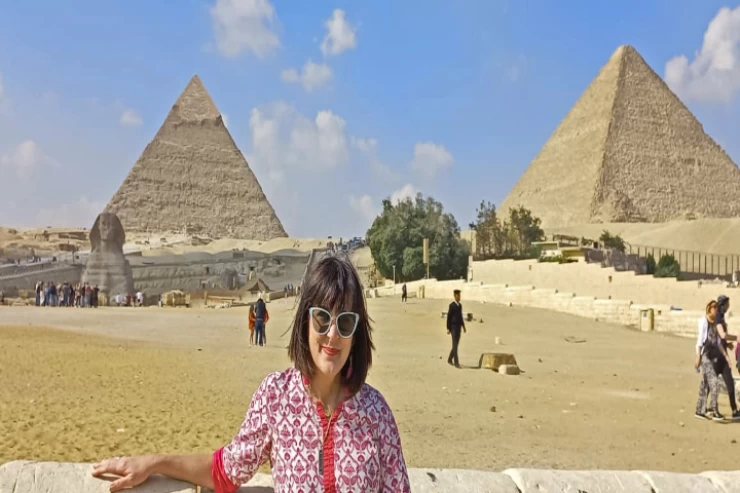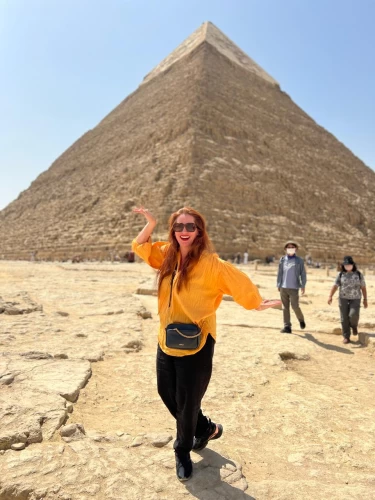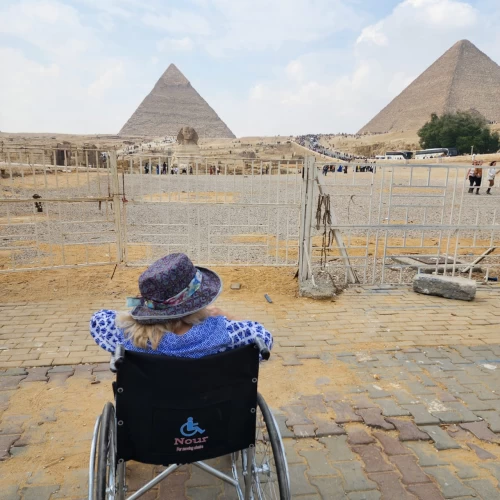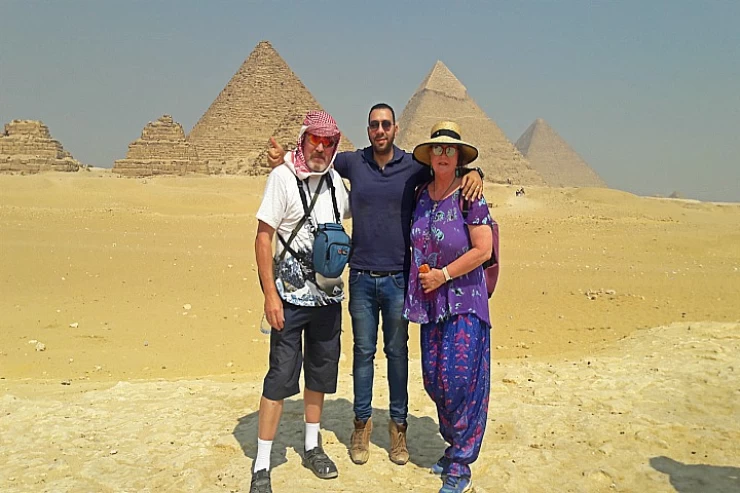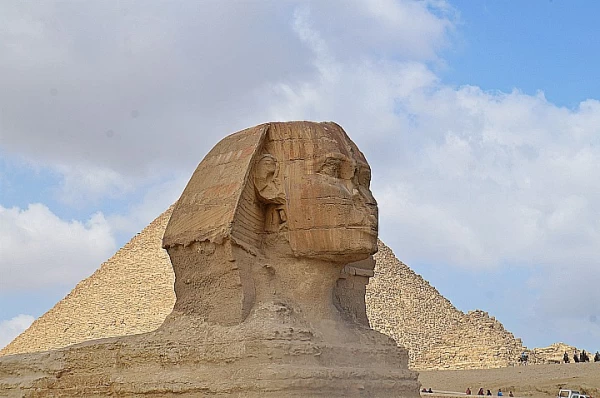
Esfinges en el Antiguo Egipto
La Esfinge es uno de los monumentos históricos más famosos de la República Árabe de Egipto y específicamente en la ciudad egipcia de Giza, debido a su apariencia única y su ubicación única cerca de las pirámides de Giza, que es uno de los símbolos más importantes de la antigüedad. La civilización egipcia junto con esta estatua histórica, y muchos indican La historia y los arqueólogos señalan que esta gran estatua pertenece a la antigua civilización egipcia y específicamente al período del reinado de la Cuarta Dinastía que gobernó Egipto en ese momento, y algunos de ellos datan la propiedad de esta estatua al rey Khafra, uno de los reyes y gobernantes del antiguo Egipto.
Esta estatua de la Esfinge fue tallada en un solo bloque de piedra, y esta estatua se formó con un cuerpo de león que representa la fuerza y la cabeza de una persona que representa la inteligencia, lo que le hizo combinar en un genio único la fuerza del animal con la inteligencia. del hombre representado por la persona del rey reinante de Egipto como el hijo del dios Amón Ra, el Señor del Sol Santo.
Si planea visitar Egipto, debería considerar revisar nuestra guía de viaje detallada de Egipto, ya que es una experiencia única durante Egypt Tours que no se puede comparar con ninguna otra cosa que hacer en Egipto. Puede disfrutar de uno de los tours clásicos en Egipto, que a todos los viajeros les gustaría navegar por el río Nilo durante los tours navideños en Egipto o con el mejor clima durante los tours de Pascua en Egipto. Cubriendo la mayoría de las excursiones de un día a El Cairo, excursiones de un día a Luxor, además de las excursiones a Asuán, es por eso que nuestra sección de información de viaje está destinada a ser útil antes de continuar con las mejores excursiones de Egipto para aquellos que buscan cultura, historia de Egipto y alojamiento de lujo mientras navegan por el Nilo. Valle.
A la estatua le falta la barbilla, algunas de las cuales se exhiben en esfinges en el Museo Egipcio en la Plaza Tahrir y el Museo Británico en Londres, y frente a "Abu Hool" hay restos arquitectónicos de un templo inacabado considerable, y este templo data de regreso a la era de la Cuarta Dinastía.
En la era del Imperio Nuevo, las estatuas de la "Esfinge" con cabeza de carnero o de halcón se extendieron al frente de los templos de Luxor y Karnak. Y el rey Tutmosis IV, de la edad de la decimoctava familia en el estado moderno, instaló una pintura de sueños entre las dos garras de la estatua de Abul-Hall en Giza para apoyar su ascenso al trono de Egipto basado en su Fabricación de una historia que confirma el apoyo del dios a él para convertirse en el próximo gobernante de Egipto en ese momento.
Las campañas dirigidas por Tutmosis III a Asia tuvieron un gran impacto en el desarrollo de las estatuas de la Esfinge, por primera vez apareció la Esfinge victoriosa que pisoteó a sus enemigos bajo sus pies, y solo en esta época la Esfinge abandonó su cabeza humana y reemplácelo con la cabeza del perro legendario o las cabezas de carneros como los de la entrada al templo de Karnak.
En la época grecorromana, aparecieron 3 tipos diferentes de "formas" de las estatuas de la Esfinge, una de las cuales es el estilo egipcio puro, que es un estilo que no ha cambiado de la forma tradicional de la Esfinge, que se conocía en tiempos anteriores. En cuanto al tercero, fue una mezcla entre los egipcios y los griegos. El tocado de la estatua es egipcio puro, mientras que las garras y las piernas cruzadas son griegas.
Las esfinges no solo se usaron a lo largo de los siglos en Egipto, sino que también se usaron fuera de Egipto, debido a dos razones. El primero son las relaciones comerciales y el segundo es la extensión del estado egipcio a su control e influencia que llegó al sur de las montañas de Anatolia. Luego, apareció una estatua de marfil de Nimrod en Asiria.
puede probar y reservar uno de nuestra gama de tours a Egipto y paquetes de viaje a Egipto muchos grupos guiados privados de tours de un día a El Cairo desde el aeropuerto y tours de un día a Egipto para explorar la ciudad capital de Egipto, El Cairo, puede consultar muchos itinerarios de Egipto o continuar uno de nuestros tours completos de El Cairo.
The Sphinx is one of the most famous historical monuments in the Arab Republic of Egypt and specifically in the Egyptian city of Giza, due to its unique appearance and its unique location near the pyramids of Giza, which is one of the most important symbols of ancient Egyptian civilization along with this historical statue, and many indicate History and archeologists point out that this great statue belongs to the ancient Egyptian civilization and specifically to the period of the rule of the Fourth Dynasty that ruled Egypt at that time, and some of them dated the ownership of this statue to King Khafra, one of the ancient Egyptian kings and rulers.
The Sphinx primarily guards the temples where the gods are worshipped. These gods had omniscient powers that enabled them to control the fate of humans and cause phenomena to occur in the world.
This statue of the Sphinx was carved from a single block of stone, and this statue was formed with a lion's body representing strength and the head of a person representing intelligence, which made him combine in a unique genius the strength of the animal with the intelligence of man represented by the person of the reigning king of Egypt as the son of the god Amun Ra, the Lord of the Holy Sun.
The dating of the Sphinx remains a subject of debate; some Egyptologists assume it dates from the reign of Chephren, while other Egyptologists attribute it to the reign of Cheops' son and Chephren's brother, King Djedefre.
In 1936, the Egyptian Egyptologist Selim Hassan discovered the Temple of the Sphinx. It is an unfinished temple, erected to the east of the Sphinx, and is rectangular in plan... The eastern facade of the temple is pierced by two entrances giving access to an open-air courtyard decorated with 24 pillars.
The temple has two sanctuaries, one to the east and the other to the west. Their orientation suggests that one represents the rising sun and the other the setting sun...Note that the 24 pillars of the courtyard may represent the 12 hours of the day and the 12 hours of the night.
The most common version that the cause of the statue's broken nose was the French commander Napoleon Bonaparte during his leadership of the French campaign on Egypt, but there is another older historical account by the historian Taqi al-Din al-Maqrizi, in the fifteenth century AD, which refuted this account.
It was a fanatical Fatimist, who believed that monuments are idols that must be destroyed, as this sheikh carried out a campaign to remove vices and depictions, especially the Sphinx, and he continued to strive to destroy it, until he was satisfied with mutilating its mouth and nose, and the statue remained in this state to this day.







